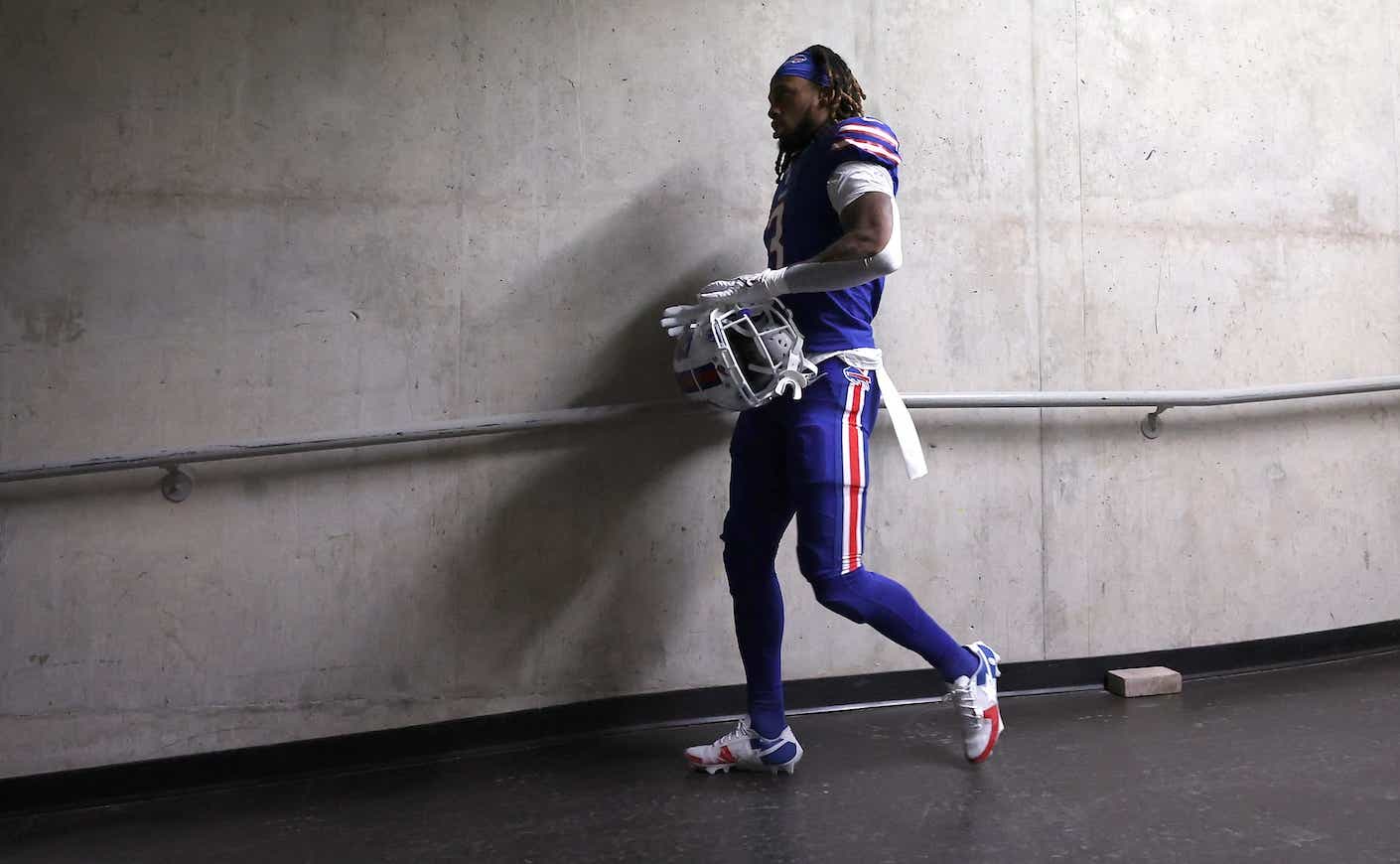About nine minutes into Monday night’s football game in Cincinnati, Buffalo Bills safety Damar Hamlin stepped in front of Bengals receiver Tee Higgins and dragged him to the ground. Hamlin rose to his feet, wobbled, and suddenly crumpled. Hamlin had gone into cardiac arrest. Medics quickly performed CPR and used a defibrillator on Hamlin before moving him to a hospital where he remains in critical condition.
It’s not yet clear what exactly caused the 24-year-old’s heart to stop, but some medical experts believe an extremely rare phenomenon known as commotio cordis could be to blame. Here’s what you need to know about this often lethal cardiac event.
What is commotio cordis?
Commotio cordis, Latin for “agitation of the heart,” occurs when a blow is delivered to the chest, directly over the heart. If that strike is hard enough and timed within a narrow window (lasting about 40 milliseconds) during the cycle of a heartbeat, it can knock even a perfectly healthy heart out of rhythm and make it so the organ’s unable to pump blood to the rest of the body, Rony Shimony, MD, a cardiologist at Mount Sinai Hospital in New York City, tells us.
“You have to be very unlucky,” Dr. Shimony says. “You have to be hit in the right place, with enough force, timed at the right point in the cardiac cycle to cause the heart to fibrillate.”
How common is commotio cordis?
Between 10 to 20 cases of commotio cordis are added to a national registry tracking the condition each year. The majority of those patients are children, with an average age of 15. Sadly, many suffer the cardiac event while playing sports.
According to the registry, the condition is seen most often in baseball, typically when a ball is driven into a player’s chest. It’s also seen in other sports where small dense objects are used, like hockey. It’s rarer in contact sports like football, but not unheard of. In a survey of 69 cases, three occurred while the victim was hit playing football (another three were seen in soccer).
How is commotio cordis treated?
Use of a defibrillator and CPR can help save the life of someone who’s suffered commotio cordis, Dr. Shimony says. A shock from the device can potentially restore the heart’s rhythm and consistent chest compressions can help keep the blood flowing to the brain and other vital organs. Performing these actions quickly is crucial, according to Dr. Shimony.
The condition is often fatal. But in recent years as more people have become aware of commotio cordis and as automated external defibrillators (AED) have become more widely available, the survival rate has increased. According to one study, between 1970 and 1993 only about 10 percent of victims survived the event. That rate rose to 34 percent from 1994 to 2012 and has increased to 58 percent in recent years.
So much of the concern in football has centered on neurological damage — and for good reason. But Dr. Shimony hopes that football coaches and staff at every level will be trained to identify and respond to cardiac events too.
“It’s a violent sport,” he says. “I think we all have to continue to look at safety for all players, which means supplying proper gear and proper education for all the coaches and physicians involved. And when someone goes down on a field, we have to really consider the possibility that it could be cardiac in nature.”









